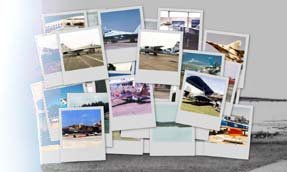





|
Based on the diary of the late Edgar Roy Cochrun, Chaplain, United States Army It was less than 2 hours past midnight, the early morning hours of 17 October 1942. There was no moon. A convoy of seven ships, among which was the USAT George Matthews, was heading north toward Port Moresby, New Guinea. It was sailing in the Coral Sea under complete blackout conditions to avoid Japanese submarines. The convoy had been proceeding without incident for several days in calm waters. Only hours earlier it had departed the area of the Great Barrier Reef via Grafton Passage. Suddenly, without warning at 1:32 a.m. there was a tremendous blow on the port bow! The Liberty Ship Egbert Benson, which had been steaming south also in total blackout conditions, had side-swiped the USAT George Matthews. Its position at the time was latitude 14° 46' south, longitude 146° 13' east. The collision immediately awoke Majors Egleburger, Medical Corps, and Cochrun, Chaplain. Egleburger shouted, "Chaplain, we're hit!" and they bound from their cots and raced to the deck. The chaplain took "1 ¼ seconds" first to put on his pants and shoes and joined the doctor on the dark deck. The George Matthews had stopped as the remaining six ships in the convoy continued on their way northwards as ordered, remaining in blackout. The Matthews was afire, a lighted target for any submarine that might happen to be patrolling the area. Suddenly the ships whistle began blowing and all floodlights were switched on. The captain was shouting orders… "All hands! Fire on port gun deck." The doctor and chaplain were on that deck, but on the starboard side, from where they observed an Army truck ablaze. It had been crushed and the friction from the collision had ignited it. Chaplain Cochrun noted how well the crew worked, with great speed and coolness, while the 250 soldiers on board remained calm and responded very quickly to orders. The fire was rapidly extinguished. Once order had been restored, roll call was held and it was discovered TSgt. William J. Theodore of the 391st Engineers had been thrown overboard from the truck that burned. He and another soldier had been sleeping in the truck and Theodore, asleep on the side next to the deck rail, had been flung cot and all into the sea. A boat was lowered to search for him, but he could not be found even with the aid of the ship's powerful searchlights. The sergeant's companion had been thrown to the deck, burned and seriously injured, but he survived. For its part, the George Matthews had not been damaged badly. The gun deck rail was partially wrecked. Two lifeboats were smashed and the bow of the ship dented and ripped. But all damage was high above the water line. The Matthews proceeded on its way an hour and 10 minutes after the collision. It left alone and unprotected the Egbert Benson, which also had lost a man. Those were the rules of war. At 10:00 a.m. the following morning, Sunday 18 October 1942, Chaplain Cochrun held a memorial service aboard the George Matthews for the missing soldier. Sgt. Theodore was from California. Today his name can be found by searching for it at the American Battle Monuments Commission site. Sgt. Theodore's name is listed on the Tablets of the Missing at Manila American Cemetery, Manila, the Philippines. === The first time I ever heard a version of this story, it claimed that the ship was sailing directly toward the Coral Sea the night before the battle there. All ships were under orders of radio silence because of that impending battle, but because these were troop ships entering the area and not combatants, the Navy broke radio silence to warn them away. According to that story, one ship went port and the other went starboard and it was then they collided. As subsequently discovered in my grandfather's diary, the "Coral Sea" story was a "mis-telling." The Battle of the Coral Sea had taken place about 400 miles away from the site of this collision some 5 months earlier. |